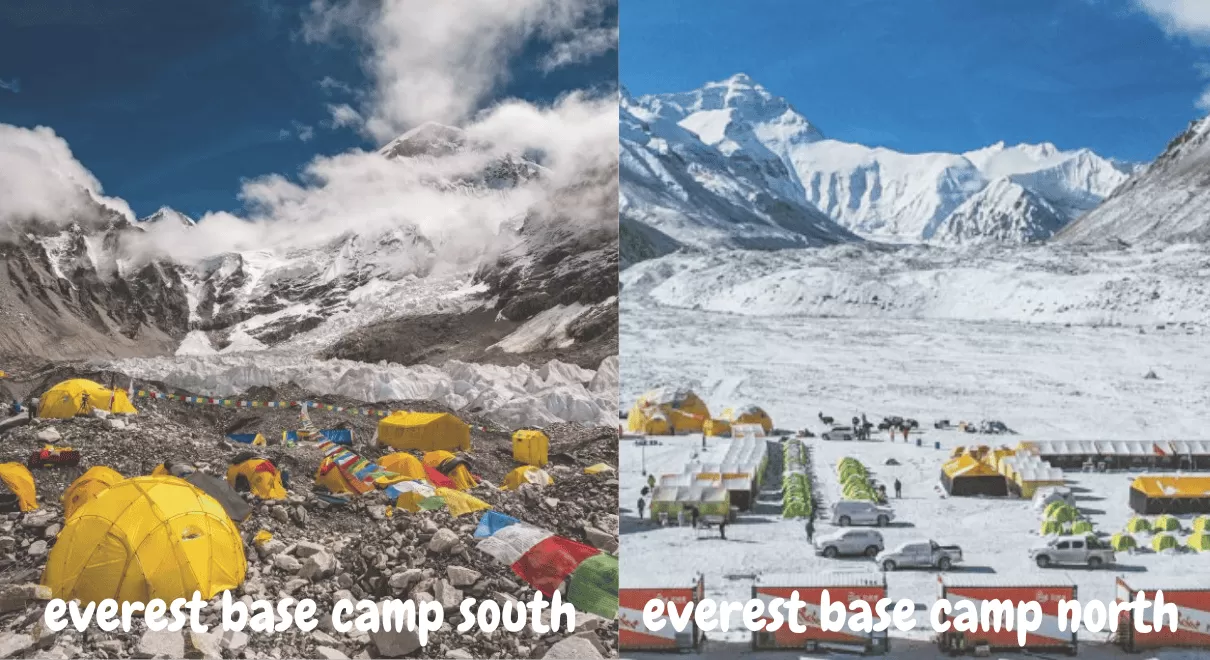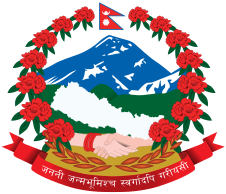Everest Base Camp China vs Nepal

The chance to stand at the base camp of the tallest peak in the world is a dream that many adventurers all over the world share. However, when planning your trip to Everest Base Camp China vs Nepal, choosing North vs South Everest Base Camp can impact everything about your experience. Whether you want to know which Everest Base Camp is better or whether to go to Everest Base Camp in Nepal or China, this comparison has you covered.
Understanding the Two Routes: North Side vs South Side
There are two sides from which to access majestic Mount Everest. Each side is different, offering various experiences, and the Everest Base Camp Tibet vs Nepal comparison showcases some major differences related to accessibility, landscape, and style of adventure.
South Side in Nepal: The Classic Trek
The Nepal route, leading to Everest Base Camp South (EBC South), is the classic trekking journey that has attracted adventurers for decades. The EBC Nepal vs Tibet comparison demonstrates that Nepal provides a genuine cultural experience, with its rich Himalayan culture mixed with the challenge of high-altitude trekking.
Key Features of Nepal's Everest Base Camp:
- Altitude: 5,364 meters (17,598 feet)
- Access Method: Multi-day trekking through Sherpa villages
- Duration: 12-16 days round trip
- Starting Point: Lukla Airport
- Cultural Experience: Rich Sherpa culture, Buddhist monasteries, and traditional mountain villages
The Nepal side makes for an amazing trip through the Khumbu Valley, visiting important places such as Namche Bazaar, Tengboche Monastery, and Dingboche. Trekkers acclimatize very gradually, while at the same time seeing and experiencing the local culture.
China's North Side: The Road Less Traveled
On the other hand, the Chinese route to Everest Base Camp North (EBC North) is a completely different experience. When you compare Everest Base Camp in Nepal versus the location in China, the Tibet side is much easier to get to and offers an incredible view of the tallest mountain in the world.
Key Features of China's Everest Base Camp:
- Altitude: 5,150 meters (16,900 feet)
- Access Method: Vehicle drive with optional short hikes
- Duration: 3-7 days
- Starting Point: Lhasa or Shigatse
- Cultural Experience: Tibetan Buddhist culture, vast plateaus, and remote monasteries
Detailed Comparison: Differences Between Everest Base Camp Nepal and China
Accessibility and Transportation
Nepal Route:
- Requires flying into Lukla's notoriously challenging airport
- Involves 10-12 days of trekking through varied terrain
- Physical fitness and trekking experience highly recommended
- Weather-dependent flight schedules can cause delays
China Route:
- Accessible by road from Lhasa or Shigatse
- Can be reached in 1-2 days by vehicle
- Suitable for travelers with limited trekking experience
- Less weather-dependent for transportation
Visa Requirements and Permits
Nepal:
- Tourist visa available on arrival or online
- Sagarmatha National Park permit required
- TIMS (Trekkers' Information Management System) card needed
- Relatively straightforward permit process
China/Tibet:
- Chinese visa required in advance
- Tibet Travel Permit (TTP) mandatory
- Alien Travel Permit for certain areas
- Must travel with approved tour operator
- More complex bureaucratic requirements
Cost Considerations
When evaluating the cost of Everest Base Camp trek Nepal vs China tour, several factors come into play:
Nepal Costs:
- Flights to Lukla: $300-500 per person
- Accommodation: $20-50 per night in teahouses
- Food: $25-40 per day
- Permits: $50-70
- Guide/Porter: $25-30 per day
- Total estimated cost: $1,500-3,000 per person
China Costs:
- Tibet Travel Permit and arrangements: $200-400
- Accommodation: $30-100 per night
- Meals: $30-60 per day
- Transportation: $300-600
- Mandatory guide: $50-80 per day
- Total estimated cost: $1,200-2,500 per person
Views and Photographic Opportunities
Which country offers better views of Mount Everest? This question depends on personal preferences:
Nepal Side Views:
- Classic southwestern face of Everest
- Surrounded by Icefall and Khumbu Glacier
- Dramatic close-up perspective
- Traditional postcard views
China Side Views:
- Northeastern face with different geological features
- Wider, more expansive mountain panorama
- Less crowded viewing areas
- Unique perspective of the summit pyramid
Physical Demands and Acclimatization
Nepal Route:
- Gradual altitude gain over 10-12 days
- Natural acclimatization process
- Significant physical exertion required
- Higher risk of altitude sickness due to rapid ascent to Lukla
China Route:
- Rapid altitude gain (potential for altitude sickness)
- Less physical exertion required
- Recommended pre-acclimatization in Lhasa
- Suitable for travelers with mobility limitations
Cultural Experiences: Nepal vs Tibet
Sherpa Culture in Nepal
The Nepal route provides a unique experience to understand Sherpa culture, engage with ancient monasteries, participate in festivals, and meet people whose life is closely tied to Everest mountaineering.
Buddhist Heritage in Tibet
The China route provides access to Tibetan Buddhist culture. You have the opportunity to visit Rongbuk Monastery (the highest monastery in the world) and immerse yourself in the immense, spiritual terrain of the Tibetan plateau.
Weather and Best Time to Visit
Nepal:
- Pre-monsoon: March-May (clear weather, warmer temperatures)
- Post-monsoon: September-November (weather conditions are steady, visibility is good)
- Winter: December-February (extremely cold, can snow)
- Monsoon: June-August (weather is cloudy, rain most days; do not recommend)
China:
- April-May and September-October are the best times for the weather
- Summer months (June-August) can be wet
- Limited access in winter due to snow
- Typically, more consistent weather than Nepal
Nepal Everest Base Camp Advantages:
- Real trekking experience
- Culturally immersive experience
- Gradual acclimatization
- Established trekking infrastructure
- No political restrictions
Nepal Everest Base Camp Disadvantages:
- Physically challenging
- Weather-dependent flights
- Crowded during peak seasons
- Higher altitude sickness risk in the beginning
- Longer time commitment
China Everest Base Camp Advantages:
- Driveable
- Less time commitment
- Less physically demanding
- Unique northern perspective
- Fewer people
China Everest Base Camp Disadvantages:
- More complex permits
- More rapid altitude gain
- Less cultural experience
- Sensitive political climate
- Guided tours required
Which Side is Better for the Everest Base Camp Experience?
Ultimately, what is best for the Everest Base Camp experience will depend on personal views, fitness level, time availability, and travel goals.
Choose Nepal when:
- You want a real trekking adventure
- You have at least 2-3 weeks
- You thrive on cultural experiences
- You have a good fitness level and hiking experience
- You are looking for more travel flexibility
Choose China when:
- You have limited time for a trip (1 week or less)
- You want to have easier physical access to Everest
- You are keen to learn about Tibetan culture
- You have limited mobility
- You prefer organized tour travel experiences
Conclusion
Both options to Everest Base Camp offer unforgettable experiences for different travelers. Our Everest Base Camp comparison shows that Nepal features the traditional trekking experience with rich cultural experience, and China includes great accessibility and different perspectives of the world's tallest mountain.
Regardless of whether you choose the Everest trek in Nepal vs the Everest driving tour in Tibet, you will have experienced the grandeur of Mount Everest from a vantage point that not many humans will have experienced. Which method you choose between EBC Nepal vs Tibet should match your brand of adventure, your physical ability, and your travel style.
If you want to put all your priorities in context, do you want the journey to be as memorable as the destination, or do you primarily want to get to Everest Base Camp as efficiently as possible? Your answers about what type of experience you're looking for should lead you toward an Everest Base Camp adventure right for your once-in-a-lifetime adventure.


.png)
.png)






